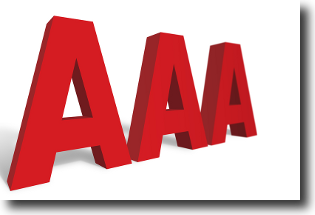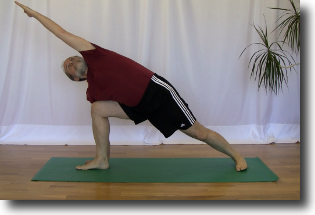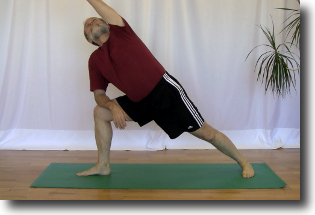Everyone was excited. Alice did not understand why then she heard the news. Her company has earned a AAA rating. This is a big deal for the company . A AAA rating means that they can now borrow money at a lower interest rate. The lending institutions recognize them as a low risk business.
Similarly a yoga teacher with a AAA rating is a low risk to their students.
What is a AAA yoga teacher
A AAA yoga teacher is someone who has mastered the art of touching. They know when it is time help you to move further into a pose and they know when it is better to offer you an alternative pose rather than force your unwilling body into a pose.
When you work with a AAA teacher you are less likely to be injured and you are more likely to progress rapidly in your learning and implementation of your yoga poses.
So, what exactly does a teacher do to earn this coveted AAA rating. First of all lets look at what is included in a AAA rating.
What is the AAA
A AAA yoga teacher knows how to align, assist and alter you in a pose.
Alice’s company earned its AAA rating by learning how to do many important things correctly.
The AAA rating for yoga teachers is all about the touching that a teacher does as they are helping you with your yoga practice. Your teacher can tell you how to do a pose. They can show you how to do the pose by demonstrating it, but the real learning comes when your teacher starts touching you and helping you directly with the pose.
A AAA teacher applies the full range of hands-on guidance when they are helping you with a pose.
There are three parts to this hands on guidance that makes up the AAA:
- Alignment
- Assisting
- Altering
These three different types of touching are all important and they are applied at different times. First let’s take a closer look at Alignment.
1 – Alignmnet
Your teacher is teaching you how to do Parsvakonasana. This is a side angle stretch where you arm is in a straight line from your foot through your hips and shoulders to your finger tips.
Despite your teacher telling you how to do the pose and then demonstrating the pose, sometimes you put your arm in the wrong place. It is pointing up in the air rather than in line with the rest of the body.
Your teacher helps you to get into the proper alignment by taking your arm and gently moving into the correct position.
There are many places in this pose and other poses that the teacher needs to check on you to insure that you have the proper alignment.
Why is proper alignment so important?
Getting proper alignment in a pose is important for two reasons.
First, the proper alignment protects you from injuring your joints or muscles. For example, if you have poor alignment you can put unbalanced stress on a knee joint and injure the ligaments and tendons.
Second, getting the proper alignment increases the benefit that you receive from the pose. In Parsvakonasana once you get the arm pointing in the right direction you will start to stretch, lengthen and strengthen the muscles in the upper side of your body. This not going to happen at all if your arm is pointing straight up in the air.
Now that you are less likely to injury yourself due to poor alignment it is time to move on to the next aspect of touching assisting.
2 – Assisting
Your teacher helps you to turn your torso further to the side in Parsvakonasana and move your shoulders closer to being one above the other. This is assisting. Your teacher helps you to go further into a pose.
Why is assisting important?
Assisting is important for two reasons.
You may have thought that you are doing the pose to the best of your ability. Your yoga teacher looks at you in the pose and realizes that there is some movement left and that by moving your body a little further you will get even more benefit from the pose.
Sometimes your muscles need to be trained and taught how to work in a particular pose. When your yoga teacher is helping you move a little further into a pose they are teaching your muscles what they need to do to properly work with you in the pose.
Can assisting be harmful?
Assisting can be dangerous. If your yoga teacher tries to take you too far into a pose they can cause injury to your muscles and joints. A teacher with a AAA rating uses their experience and the feedback from your body to guide them on how much assisting is the right amount for you in this pose.
It is very common for your body to be more flexible on one side compared to the other. Your yoga teacher uses the feedback from your body to guide them on how much assisting to do on each side of pose.
Aligning and assisting are both important aspects of the AAA rating. The last component of the AAA is Altering and it is equally important as the other two “A”s.
3 – Altering
Your yoga teach looks at you in Parsvakonasana and realizes that you do not have enough flexibility in your hips and shoulders to do the pose safely.
Rather than attempting to get your hand on the floor beside your front foot, they tell you to put your elbow on your knee. This modification works with the limitation of your body and lets you work towards the full pose over time.
As you flexibility improves your teacher will modify the pose once again. Rather than putting your elbow on your knee it is time to put your hand on a block beside your foot. Eventually your teacher will tell you are ready to do the full pose.
Why is Altering important?
Altering a pose accommodates the limitations of your body. You are less frustrated and more satisfied with your yoga practice if you are working at the limit of your ability rather than pushing beyond that boundary.
There are three benefits when you work with a AAA yoga teacher: less injury; more satisfaction and more progress.
You avoid injuring yourself by attempting a pose that your body is not ready for. The modified pose will give you and your body the opportunity to improve gradually and then move on to the full pose with safety.
Now that we have covered the three parts of a AAA yoga teacher you have probably realized that there are some benefits to you of having a AAA teacher.
What are the benefits of AAA yoga teacher?
When you study with a AAA yoga teacher you receive several benefits including:
- Less injury. You are less likely to injure yourself or have your teacher injure you. The AAA yoga teacher recognizes when you are at risk and helps you to move to a safer place.
- More satisfaction. You are getting more out of your yoga class. You are getting further into poses. You are less frustrated by difficult poses. Your teacher is helping you to move forward rapidly and safely.
- More progress. Because your are not injuring yourself and your teacher is helping you to move forward your yoga practice is progressing smoothly.
How does your yoga teacher apply the AAA?
They use their experience to assess you in the pose then they decide what needs to be done.
If you do not have enough flexibility to get into the pose safely your yoga teacher will move to the Altering stage and help you to modify the pose to accommodate your current flexibility or they may suggest a different pose all together.
However, if you can get into the pose reasonably well, your yoga teacher will work with you on the other two “A”s of the AAA alignment and assisting.
First your yoga teacher will help your to get the alignment right, preventing you from injuring yourself.
Second your teacher will assist you to move further into the pose and teach your muscles what can be done.
Who gives the AAA rating to your teacher?
Your yoga teacher develops the AAA skills over time. They take workshops where they learn the techniques of aligning, assisting and altering. Once they learn the techniques they then implement then as they teach you in class.
You give your teacher the AAA rating after you have experienced the full range of touching and guidance from your teacher.
Summary
It took Alice’s company a long time to earn their AAA rating and reap the benefits. In the same way it takes a long time for you yoga teacher to develop their AAA rating of
- Aligning
- Assisting
- Altering
They recognize which of the three techniques to apply to you in the pose you are doing. They know which one needs to be applied first in each pose for each student. Applying the three types of touching requires a lot of experience and knowledge.
Once your teacher has earned their AAA rating you will benefit from less injuries and improvement in your yoga poses.
Next Step
The next time you are in class check out the kind of touching that your yoga teacher is doing. Are they helping you with alignment, assisting you to go further in a pose or altering the pose for you.
Do you have a AAA teacher? If you do let your friends know that you have a AAA yoga teacher and that they should come and see for themselves how great they are at teaching yoga.
Additional Reading
For a different perspective on touching in yoga, read the article Why is there touching in yoga
You use the Edge to give you and your teacher feedback about when it is time to stop moving too far into a pose and back off to a safe place. To learn more about your edge read Goldilocks and the three bears find the edge






